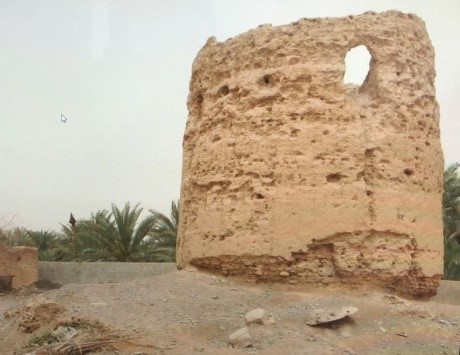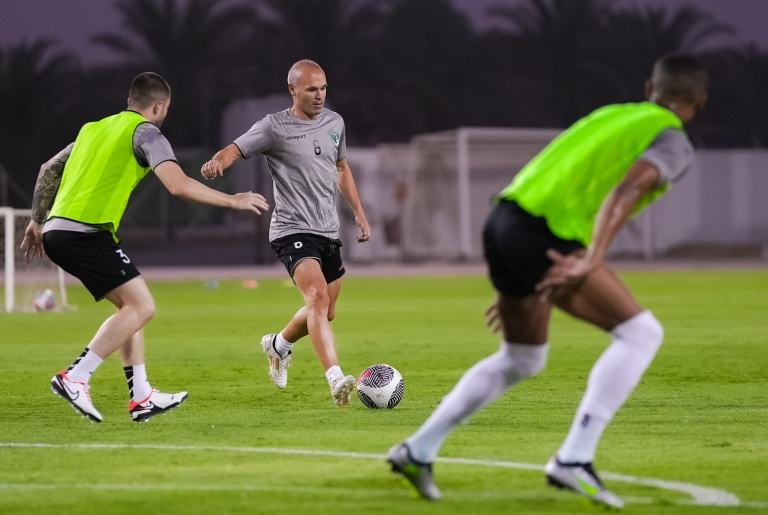 برنامج مشاهدة محتويات الانترنت
برنامج مشاهدة محتويات الانترنت
أبراج «خت» سيرة تفوح في الوجدان الشعبي 2 0 1 8 سبتمبر 1 5

حين يجمع «المكان» جمال الطبيعة وسحرها مع تاريخ حافل وتراث غني وقيم أصيلة يرويها رجالات الرعيل الأول من المخضرمين وشهود العيان والشخصيات الوطنية، تكتمل أركان الأصالة والرواية، ويفوح عبق التاريخ والجغرافيا في الإمارات، وهو ما يتجسد في منطقة «خت» الواقعة على بعد نحو 20 كيلومترًا جنوب مدينة رأس الخيمة.
يروي محمد بن راشد النقبي مسؤول منطقة «خت» في رأس الخيمة (75 عامًا)، ومضات خاطفة لكنها وافية من تاريخ المنطقة قديمًا، مشيرًا إلى أنها كانت غنية بالمياه المعدنية الوفيرة والأفلاج والعيون الكبريتية، فيما تحيط بها الجبال الشاهقة وبعض الأودية، وتكللها مزارع وبساتين النخيل، حيث يبلغ عدد تلك المزارع أكثر من 300 مزرعة، موضحًا أن اعتماد الأهالي كان ينصبّ على الزراعة لتوفر المياه بكثرة بجانب رعي الأغنام، إذ حيثما وجد الماء وجدت الحياة.
ويشير النقبي إلى أن المنطقة كانت مطمعًا لقطاع الطرق في الماضي قبل نشأة الدولة وقيام الاتحاد في ظل توفر المياه والمزارع والمراعي الخصبة والمواشي «الحلال» ليبادر أبناء «خت» إلى تشييد الأبراج والقلاع والحصون، دفاعاً عن منطقتهم.
يؤكد النقبي أن عدد الأبراج في المنطقة يصل إلى خمسة أبراج متفرقة في المنطقة جغرافيًا، مشيراً إلى «برج المدينة» الذي يقع على جبل «خت» المبني عام 1901، وهو يكشف ويراقب المنطقة بأكملها، وكان يتولّى حراسة البرج ويعمل فيه أبناء «خت» من كبار السن في المنطقة، وقد فارقوا الحياة، وقد بُني البرج بأمر وتوجيهات الشيخ سلطان بن سالم القاسمي أولًا، ثم الشيخ صقر بن محمد القاسمي، رحمهما الله.
ووفقاً لمحمد النقبي فإن البرج الأول هو «برج النقبي» الذي بني عام 1938 وفق كتاب «رأس الخيمة بين الماضي والحاضر» الذي أصدرته جمعية ابن ماجد في رأس الخيمة، ويروى عن كبار السن من أهالي المنطقة، أن البرج شيّد قبل هذا التاريخ بحوالي 100 عام تقريبًا في حين خضع لعملية صيانة وترميم عام 2001 بأمر من المغفور له، بإذن الله تعالى، الشيخ صقر بن محمد القاسمي.
ويلقي محمد بن راشد النقبي الضوء على قصة «برج النقبي» الذي بناه جدّه علي بن منصور النقبي قبل مئة عام تقريباً، أي في نهاية القرن التاسع عشر، ويقع في وسط منطقة «خت»، وكان قد بني في زمن «الحروب القديمة»، بهدف حماية المنطقة وثرواتها من أطماع «قطّاع الطرق» آنذاك، موضحًا أن المواد التي بني منها هي الطين والجص والحصى، ويضم أعلى البرج غرفة وفتحة كبيرة لإطلاق قذائف «المدفع» المتوفر في البرج حينها في اتجاه قطّاع الطرق واللصوص وأي معتدين، إضافة إلى فتحات صغيرة كانت مخصصة لرماية البندقية.
يقع برج «بن عنبر» بالقرب من مسجد «بن عنبر» القديم في بلدة «خت»، وكان الأهالي قديمًا يطلقون عليه «المسجد الغربي»، حيث بُني من الطين الأحمر والجص وفقاً لتقاليد العمارة التقليدية والتراثية في الإمارات في ذلك الزمن.
ويلفت مسؤول منطقة «خت» في رأس الخيمة إلى معلم تراثي قريب من «برج بن عنبر» هو عبارة عن مسجد قديم يقع في الجهة الغربية من المنطقة كان يطلق عليه في ضوء رواية كبار السن من الأهالي اسم «المسجد الغربي»، و«مسجد برج بن عنبر»، ويقدر عمره بأكثر من مئة وخمسين عامًا، فيما بُني من الطين الأحمر والجص والحصى مع الخشب القديم في سقف المسجد، وكان الخشب يستورد من الهند بواسطة التجّار الإماراتيين القدامى الذين كانوا يتنقلون بين موانئ دبي ومسقط في عمان ومومباي في الهند، ويعتبر هذا المسجد معلمًا تاريخيًا مهمًا في المنطقة، لكنه يحتاج إلى الصيانة والترميم عاجلًا، كما يؤكد مواطنو «خت».
وهناك غرب منطقة «خت» برج يطلق عليه «برج الحارة الغربية»، بُني في أواخر القرن التاسع عشر وفق روايات المعمرين وكبار السن من أهالي المنطقة، وبعض المراجع التاريخية.
بحسب قبيلة النقبيين، يتبوأ البرج الخامس من «أبراج خت» التراثية الذي لم يبق له أثر، موقعًا لافتًا وسط النخيل غرب البلدة، ونظرًا لعدم صيانته وترميمه والتأثيرات السلبية لتقادم البناء التاريخي وعوامل التعرية والطبيعة، تساقط البرج مع كثرة التشققات والتصدعات التي ألمّت به على مدار سنوات طويلة، في حين لا تزال أطلال ذلك «البرج» شاهد عيان حتى اليوم يعرفها مواطنو «خت»، وكان بالقرب من البرج الخامس برج آخر أصغر حجمًا، وهو خاص بالشيخ صقر بن محمد القاسمي، رحمه الله، وهو الذي شيّده، ويعرف هذا البرج بين الأهالي باسم «غرفة»، ويستخدم في حراسة المنطقة والمزارع فيها.
نقلًا عن والده الشيخ راشد بن علي النقبي، رحمه الله، الذي كان أمير منطقة «خت» وفقًا للتسمية المعروفة في تلك الحقبة، يشير محمد النقبي إلى أن والده أبلغ الشيخ سلطان بن سالم القاسمي حاكم رأس الخيمة حينها بحاجة المنطقة إلى «مدافع» لحمايتها والدفاع عنها، ليرسل، طيّب الله ثراه، مدفعين على ظهور الجمال، وُضع الكبير منها في برج المدينة على جبل «خت»، بينما وضع المدفع الصغير في «برج النقبي» وسط المنطقة.
بدوره يقول فهد بن خصيف النقبي من أبناء «خت»: إن البلدة تعد منطقة سياحية معروفة على مستوى الدولة، ما يعزز أهمية الحفاظ على تاريخها وتراثها العمراني الأصيل، مؤكدًا أن أبناء «خت» طالبوا الجهات المختصة بترميم «الأبراج» والمسجد القديم في المنطقة قبل تدهور حالتها وسقوطها بعد زمن مضى، وهي تشكل إرثًا تاريخيًا مهمًا في الإمارة والدولة إجمالاً، داعيًا إلى اهتمام الجهات المعنية بالموضوع، وتنفيذ صيانة عاجلة وفورية لتلك المعالم التراثية الحيوية.
ويؤكد فهد أهمية وضع لوحات خاصة عند كل برج، تحمل نبذة مكثفة عن تاريخه وآلية بنائه وإنشاء سور حول كل برج بطريقة هندسية تعبر عن التراث الإماراتي مع تنظيف تلك المواقع وإنشاء الطرق المعبدة ومواقف للسيارات بجانب الخدمات الأخرى لتسهيل وصول الزوار والسياح إليها، لتعريف العالم بتاريخ وتراث الدولة.
أحمد عبيد الطنيجي مدير عام دائرة الآثار والمتاحف في رأس الخيمة، أكد أن الدائرة تعكف على خطة متكاملة لصيانة وترميم المعالم التاريخية والتراثية في الإمارة، بمختلف مناطقها وعبر امتدادها الجغرافي، بصورة تدريجية، ما يشمل منطقة «خت»، بهدف الحفاظ على ذاكرة رأس الخيمة وحماية التراث الوطني وتعزيز الهوية التاريخية والتراثية والحضارية للدولة.





